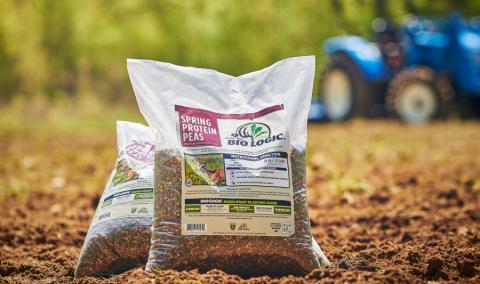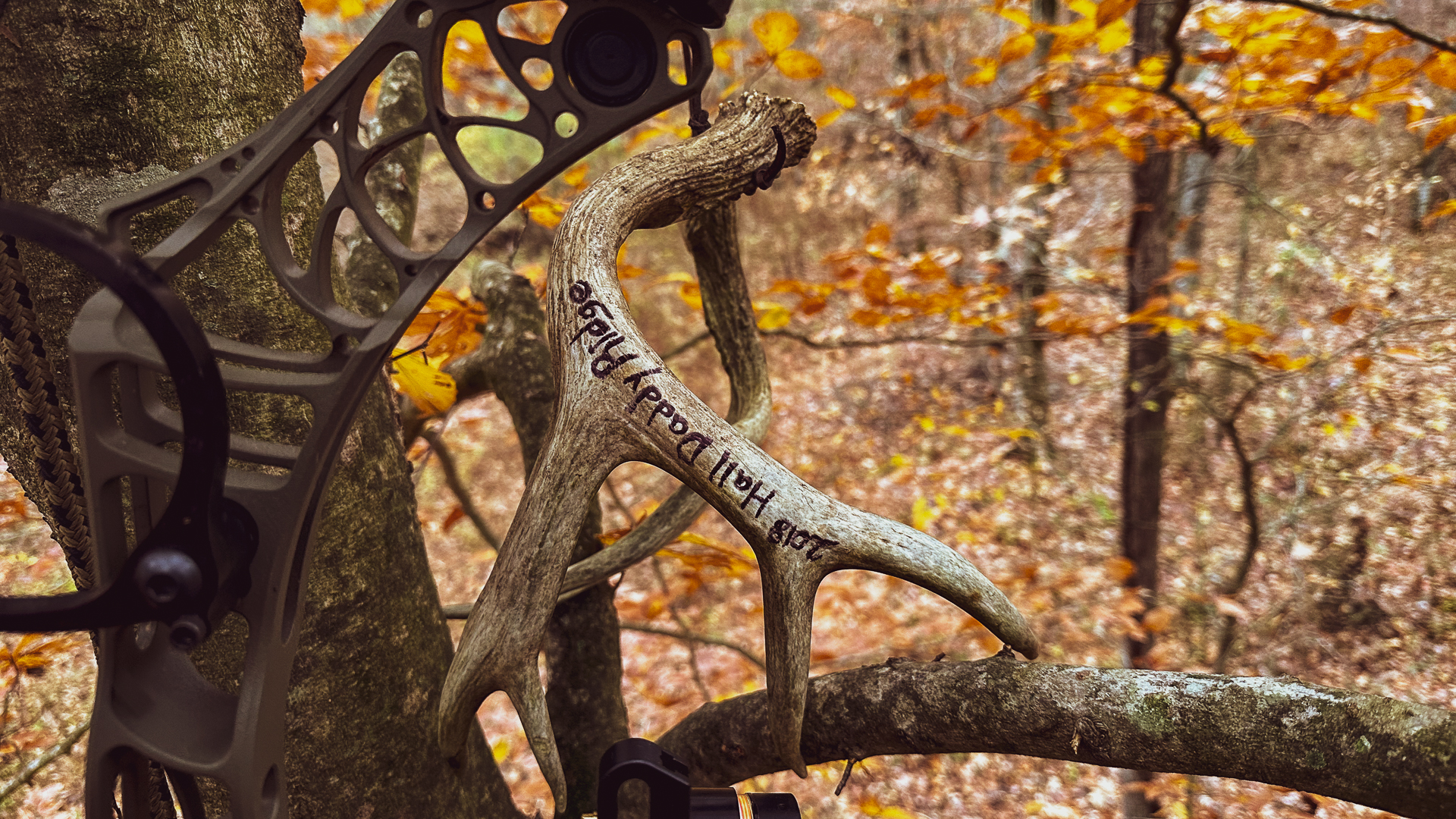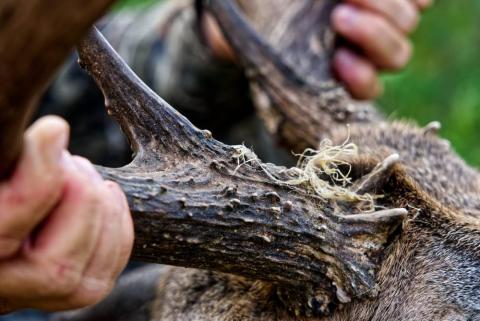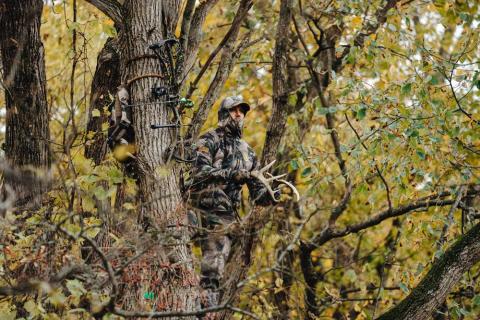Heath Wood
As I moved my game cameras around my hunting property, I hoped to narrow down specific locations where deer movement was the greatest. I captured several pictures of deer throughout the summer, yet few bucks showed their faces. Finally, in late July, I got a tip from the landowner on where I should put up a camera. To my surprise, the location where he had observed several mature bucks running in a bachelor group was within seeing distance of a house and was a mere one hundred yards from where he drove his tractor in and out daily while feeding cattle.
My expectations were low due to the location of where the landowner had guided my camera placement. In a small overgrown pasture, I placed a Stealth Cam Fusion Cellular Camera overlooking two bags of feed I had poured out to help attract deer to that specific location.
The landowner was correct; within a few short days, four to five mature bucks and a slew of does and fawns began visiting the feeding site multiple times throughout the day.
Over the next two months, I received more pictures from the small overgrown pasture than I had gathered from all of the other camera sites on the farm. On multiple occasions, I captured photos of deer feeding and even bedding in the tall grass in the small, non-secluded field. On October 4th, I harvested a mature buck with my bow in the same general area, several weeks after I had quit feeding due to state game laws. After harvesting the mature ten-pointer, I often wondered why that area attracted so many deer during the summer and early fall seasons.
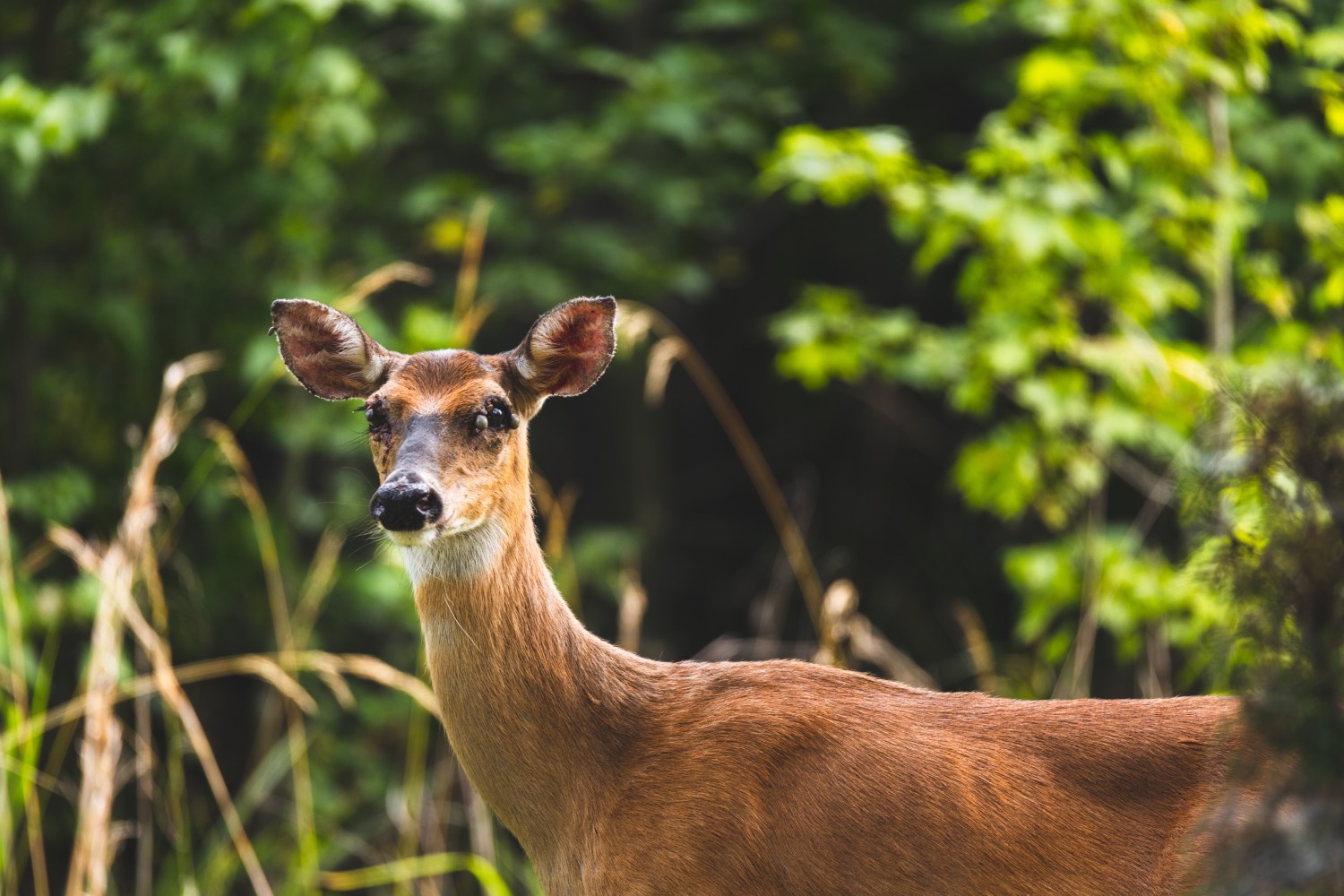
Photography by Rob Kinney
After two years of capturing many photos in the same area while deer were in their summer patterns, I received my answer. When the first frost hit and cooler temperatures arrived, deer movement in the small field switched suddenly. The landowner pointed out that he sprayed the pastures where his cattle would most often stay with insect and tick control each summer. “The deer know there are fewer ticks, flies, and biting insects near this field, and that’s why they hang out here during the summer,” explained the landowner. Could this be true? Do deer know where there are fewer ticks?
I have often heard early-season hunters say they were afraid to eat their deer due to the excessive ticks found when field dressing and processing. Fear that these ticks could transmit diseases or cause other health concerns often left hunters unable to consume their harvest. However, a recent article published on Drury Outdoors Deer Cast covered new studies that indicate a deer’s blood kills Lyme disease, one of the most significant diseases passed to humans from ticks.
As hunters, we shouldn’t be as worried about diseases that deer may receive from ticks. However, there are still several adverse effects that deer can have resulting from ticks, even altering a buck's antler growth.
What Negative Effects Do Ticks Have On Deer?
Less Antler Growth
When watching a popular survival show on television where men and women are left in remote areas during the warmest parts of the year, I have often stated how miserable they must feel due to the excessive number of bug bites they have covering their entire bodies. That same stress humans feel must be similar to that of deer, which become covered in ticks during the summer. I have witnessed deer with their ears covered in ticks and their eyes almost matted shut due to ticks. How can that not be stressful for a deer?
Stress is one of the leading causes of bucks failing to grow their antlers to their full potential. Ticks and parasites are a significant source of environmental stress amongst wildlife. When deer become infested with a large number of ticks and insects, they have antler asymmetry, which forces a buck to utilize all their energy and nutrients to cope with pathogenic challenges, leaving fewer nutrients for them to grow and develop their antlers.
Unhealthy Fawns
Recently, I have had two friends tell me that they witnessed baby fawns near their homes, which seemed to be failing in health due to a large number of ticks covering their faces. After researching ticks' harmful effects on fawns, I found that the QDMA (Quality Deer Management Association) has found that heavy infestations of ticks may produce fawn mortality up to a reported estimate of thirty percent.
Fawns who experience excessive ticks can sometimes quit eating and drinking properly, quickly resulting in declining health at a time when every nutrient is vital for survival. In my observations, I have witnessed fawns losing their eyesight due to a glob of ticks covering their eyelids. Fawns are already a target for many predators seeking an easy meal, add blindness to a small, defenseless baby deer, and they will likely fall to more predator attacks.
What Can Be Done To Help Deer With Tick Control
Deer, unfortunately, do not have the luxury of spraying down with tick spray every day. So, what can hunters do to help deer throughout the summer to reduce the number of ticks and parasites attached to their bodies?
As with the wildlife on my hunting property, deer will congregate in areas with fewer ticks. Although some feeds on the market are said to help control ticks, no food will destroy all ticks. These foods can help, as can sulfur blocks like the ones farmers give their cattle. However, to help a deer herd, hunters should focus on the deer's overall health. When hunters implement minerals and supplemental feeds on their property, they are helping increase the antler size of their bucks and improving the health of deer by giving them a boost of nutrition. This can help fight off ticks and parasites, which may suck some of their nutrients away each summer.
















